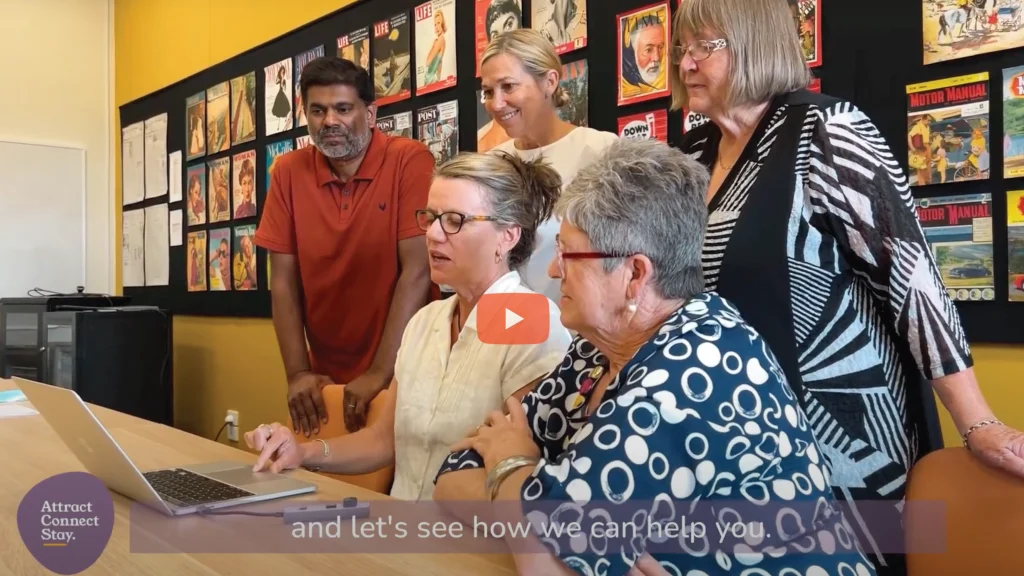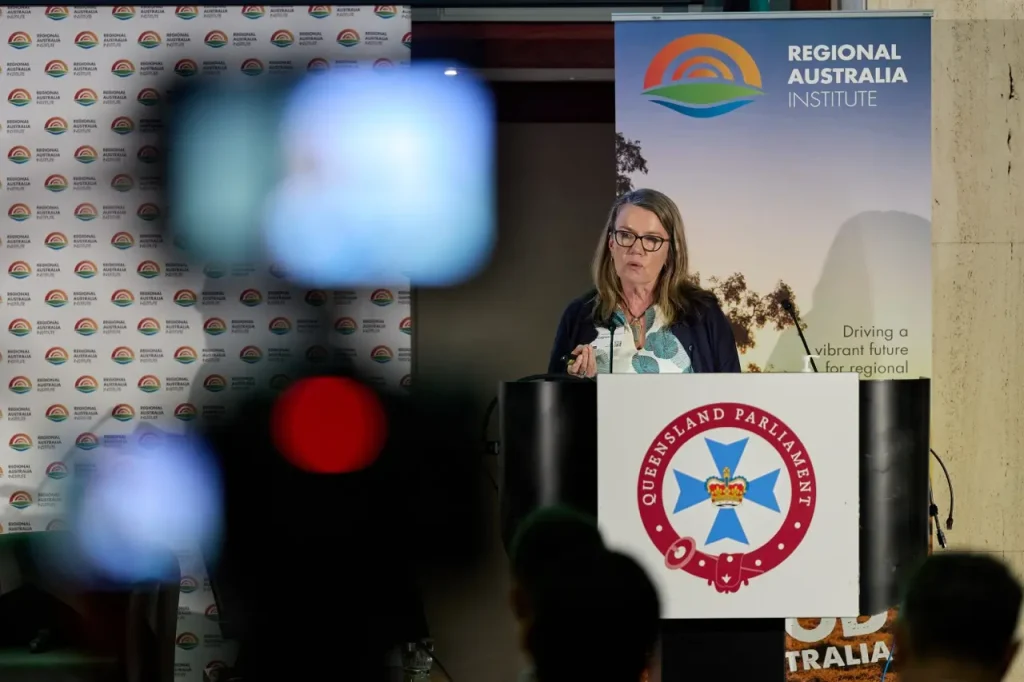Living in a rural area appeals to many for an abundance of reasons – but it often means sacrificing access to healthcare and social care services because of shortages of health professionals. It doesn’t have to be this way.
Following almost a decade of research and hundreds of interviews with rural health staff, Dr Cath Cosgrave has created a person-centred and holistic approach – the Attract Connect Stay Framework and its flagship Community Connector Program are aimed at tackling the long-standing problem of a shortage of health professionals facing many rural communities.
The Attract Connect Stay Framework is gaining attention across Australia, giving new hope to rural communities that they can, in fact, attract and retain great health professionals in their region.
The rural health workforce issue
Chronic health workforce shortages and high turnover of health professionals are a common challenge facing many rural communities.
Dr Cosgrave explains the big issue is maldistribution. There is an oversupply of health professionals in metropolitan areas and an undersupply in rural areas.
“These health workforce shortages intensify the more remote the community is, particularly for the medical and allied health workforces,” Dr Cosgrave said.
“In Australia, the impact of a maldistributed health professional workforce is that rural Australians experience poorer health outcomes than their city counterparts—living shorter lives, acquiring greater levels of chronic disease, sustaining more injuries, and experiencing poorer mental health.”
Why is this so?
Dr Cosgrave’s research has revealed that health professionals’ decisions to accept a rural health position, and their subsequent decision to stay or leave, are complex and influenced by ‘a myriad of highly interactive dimensions within personal, organisational, social and spatial domains’.
These influences can be broadly categorised into three domains:
- organisational (or workplace);
- role (including profession and career development opportunities); and
- personal (including individual characteristics, spousal and family support, social aspects, and lifestyle interests).
While career and workplace opportunities are important in retaining healthcare professionals, experiencing a ‘sense of community’ and ‘feeling settled’ plays a crucial role in retention.
“I’ve identified through my research, that if ‘newcomers’ did not develop strong social bonds within the first 12-months of relocating, then turnover is likely,” Dr Cosgrave explains.
How do we help?
There are current government and rural health service initiatives aimed at boosting the rural health workforce but they fail to address two significant influences on recruitment and retention.
These factors are:
- the personal needs of individual health professionals; and
- the unique contextual circumstances of rural communities.
“There is an urgent need for a ‘fundamental reframing’ of the rural health recruitment and retention problem. This change is not about rejecting the old – in fact there is much merit in governments’ pursuit of a rural pipeline strategy given its positive influence on the rural practice intentions of medical graduates,” Dr Cosgrave says.
“The reframing required, is to move from a narrow economic understanding of the maldistributed health workforce problem towards a more person-centred and holistic approach.”
The development of the Attract Connect Stay Framework and the Community Connector Program, is Dr Cosgrave’s response to this call.
What is the Community Connector Program ?
The Community Connector Program is a proven, grass roots, bottom-up program, mobilising the passion, knowledge and practical skills of residents, community groups and local organisations to better attract and retain health professionals.
The aim of the Community Connector Program is to establish a locally-funded, locally-recruited and community-managed – Community Connector.
“The Community Connector’s role is to build networks to better identify and successfully ATTRACT out-of-area health professionals who are a ‘strong fit’ for local healthcare and social care positions as well as for living in the local community,” Dr Cosgrave says.
“The Community Connector is responsible for assisting newcomer health professionals (and their families) to CONNECT by supporting them with settling-in (including helping partners find suitable employment) and helping build social connections. The Community Connector does this by drawing on and linking newcomers into local networks and supports.
“The overall aim of the Community Connector Program is to build and strengthen rural communities local healthcare and social care workforces by identifying and attracting out-of-area health professionals to relocate and then supporting them in tailored ways that will encourage them to choose to STAY.”
How do you get involved?
It’s simple Dr Cosgrave has created the Establishing the Community Community Program that allows you to determine whether your community is a good fit for the Program and if so how to implement and sustain it, step-by-step.
You can find out more, or get started, here.







